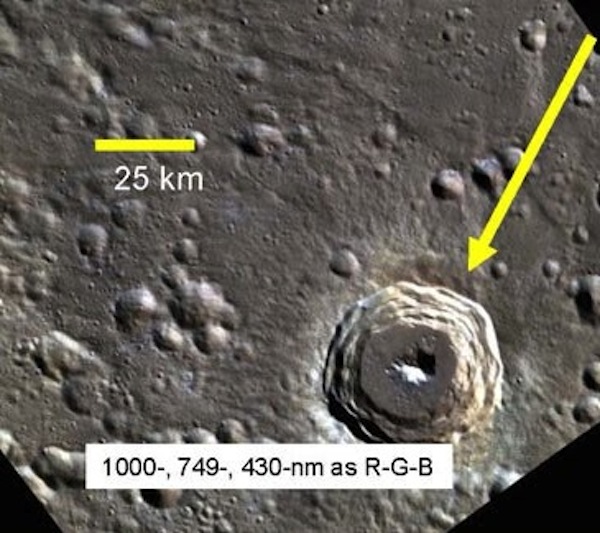Podcast: Play in new window

BOB HIRSHON (host):
The great crater naming challenge. I’m Bob Hirshon and this is Science Update.
If you’ve ever wanted to name a crater on the planet Mercury—and who hasn’t?—now is your chance. MESSENGER, the first spacecraft ever to orbit the planet, has discovered hundreds of craters over the past three years, and NASA is enlisting the public’s help to name five especially interesting ones. MESSENGER scientist David Blewett says some of the craters are bisected by long lines of cliffs, others have ancient volcanic vents, and he says one even contains ice.
DAVID BLEWETT (Johns Hopkins Applied Physics Laboratory):
One of the major accomplishments of the MESSENGER mission has been to confirm that it is in fact water ice that is lurking in the bottoms of some of these polar craters.
HIRSHON:
Mercury craters are named after famous artists, writers and musicians. If you’ve got a suggestion, there’s a link to the competition at scienceupdate.com. I’m Bob Hirshon, for AAAS, the science society.
SUBMIT A CRATER NAME HERE! Hurry! Contest ends January 15, 2015 at 23:59 UTC.
